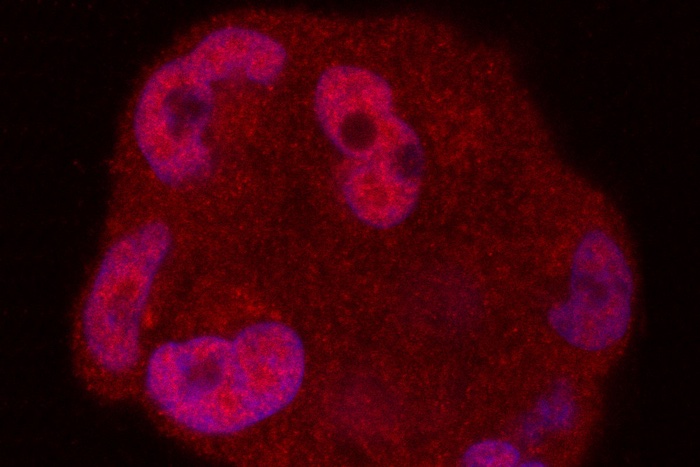Although many patients with prostate cancer are treated with therapies that block hormones that fuel tumor growth, most patients develop resistance to these therapies. Now, researchers from Washington University School of Medicine in St. Louis have identified an RNA molecule that suppresses prostate tumors in mice. The scientists uncovered that prostate cancers develop ways to stop this RNA molecule to allow themselves to grow.
Their findings are published in the journal Cancer Research in a paper titled, “Loss of long noncoding RNA NXTAR in prostate cancer augments androgen receptor expression and enzalutamide resistance.”
“Androgen receptor (AR) signaling continues to play a dominant role in all stages of prostate cancer (PC), including castration-resistant prostate cancers (CRPC) that have developed resistance to second-generation AR antagonists such as enzalutamide,” the researchers wrote. “In this study, we identified a long noncoding RNA (lncRNA), NXTAR (LOC105373241), that is located convergent with the AR gene and is repressed in human prostate tumors and cell lines.”
“The drugs that we have to treat prostate cancer are effective initially, but most patients start developing resistance, and the drugs usually stop working after a year or two,” explained senior author Nupam P. Mahajan, PhD, a professor of surgery in the division of urologic surgery. “At that point, the options available for these patients are very limited. We are interested in addressing this need—developing new therapies for patients who have developed resistance—and we believe the RNA molecule we’ve pinpointed may lead to an effective approach.”
Studying the stretch of DNA that codes for the androgen receptor, the researchers discovered that a section of the DNA molecule next to the androgen receptor produced a molecule called a long noncoding RNA. The researchers discovered that this long noncoding RNA is critical in regulating the androgen receptor.
“In prostate cancer, the androgen receptor is very clever,” said Mahajan, who is also a research member of Siteman Cancer Center at Barnes-Jewish Hospital and Washington University School of Medicine. “Our research shows that it suppresses its own suppressor; essentially it binds to NXTAR and shuts it down. This means that in all the prostate cancer samples that we study, we rarely find NXTAR, because it is suppressed by the heavy presence of the androgen receptor in these types of tumors. We discovered NXTAR by using a drug that my lab developed that suppresses the androgen receptor. When the androgen receptor is suppressed, NXTAR starts to appear. When we saw this, we suspected that we had discovered a tumor suppressor.”
The researchers demonstrated restoring NXTAR expression caused the tumors to shrink using human prostate tumor samples implanted in mice.
“We are hoping to develop both this (R)-9b drug and NXTAR into new therapies for prostate cancer patients who have developed resistance to the front-line treatments,” Mahajan said. “One possible strategy is to encapsulate the small molecule drug and the key piece of NXTAR into nanoparticles, perhaps into the same nanoparticle, and shut down the androgen receptor in two different ways.”


